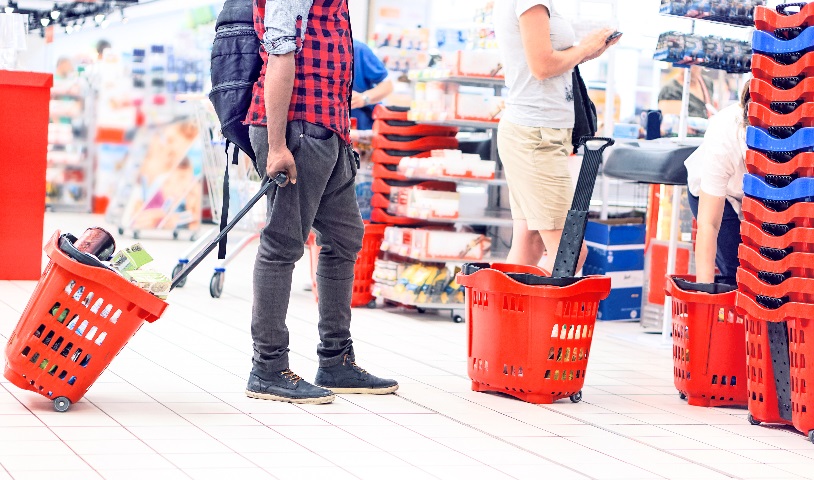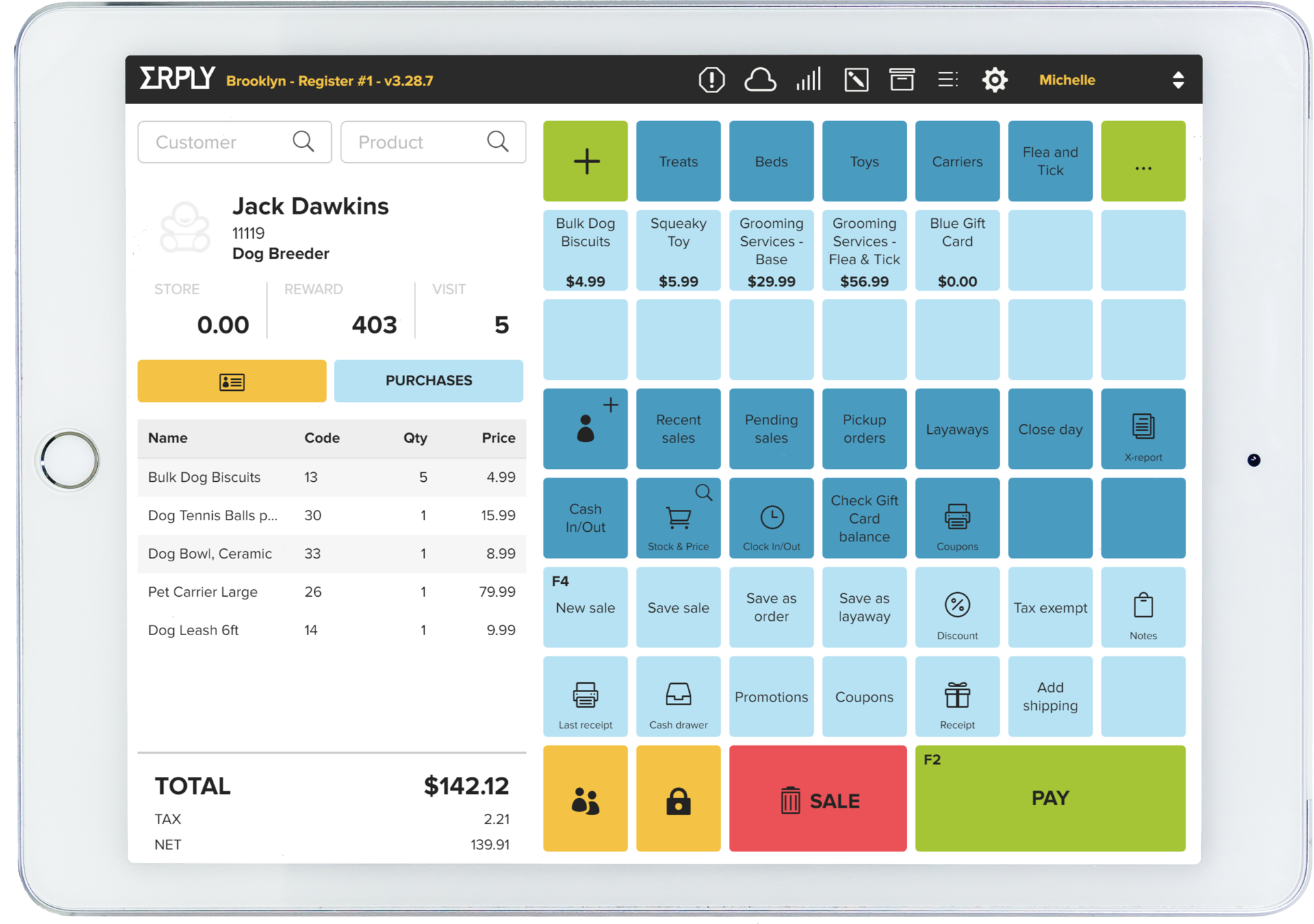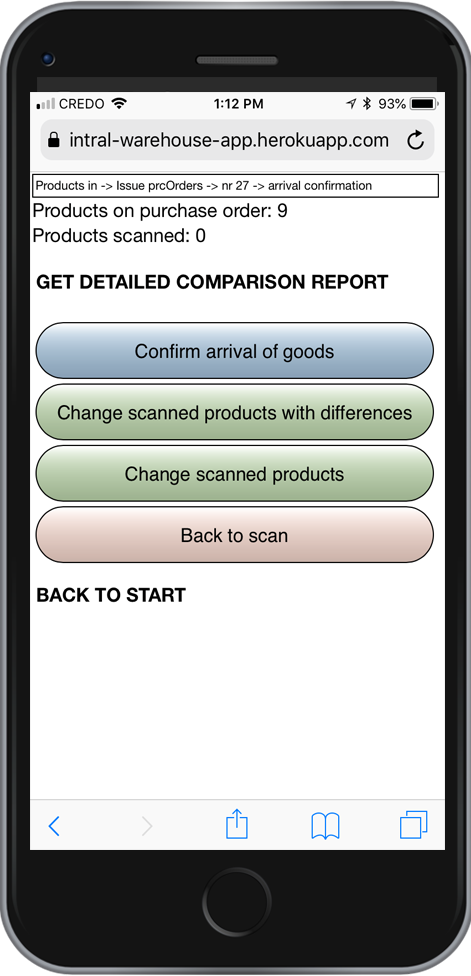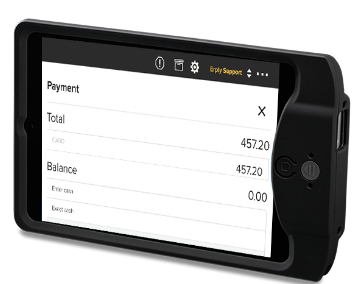Mobile point of sale systems
(usually called mPOS or mobile POS) are changing that paradigm, though.
Line busting, or the ability to reduce or eliminate time-wasting queues, is perhaps the single most common use of mPOS technology today. However, the benefits of this technology go much deeper than just cutting down on a customer’s wait time. You’ll find a host of different advantages. In addition, there are ways that mPOS can benefit your business that go well beyond line busting.

Understanding the Benefits of mPOS When Used for Line Busting
Before we dive too far down the rabbit hole, it’s important to understand why lines are such problems for retailers in the first place. Why bother with line busting at all?There are plenty of reasons why long lines and long wait time can hurt your business:
- Negatively impact the customer experience.
- Create a negative brand image in your customers’ minds.
- Increase the chance that a customer will defect to another retailer (one where they’ll waste less time waiting).
- Negatively impact your staff, their duties, and more.
Increased Sales
Let’s address the notion that wait times impact the number of customers who shop in your store and the volume of completed sales. There is some disagreement between business owners between how mPOS can boost your business.- mPOS technology can only help you serve your existing customers better, without adding any sales.
- Having a mPOS in place can lead to a noticeable uptick in sales volume with
does
prevent customers from going elsewhere. Think of this scenario:
It’s a busy Saturday afternoon, and there are lines four or five customers deep at your registers. Another customer walks through the front door, sees the lines, and realizes they just don’t have the time or patience to deal with that sort of wait right now. They turn around and leave. Rather than coming back later, they’ll most likely to go a competitor.
Another example here is buyer’s remorse, or customers second-guessing their purchases while they wait to check out at a regular POS. Quite frequently, customers faced with extra wait time will begin combing through their potential purchases. It’s also quite common for them to rethink the purchase of some items, and put them back before the reach the cash register.
While mPOS might not attract customers who would not have come through your door in the first place, it can help prevent those that do from turning around and leaving. Most POS are built with these busy store scenarios in mind. Erply, for example, lets you save sales right from your mPOS. Say a customer at the register realizes they forgot to pick up an item or they left their wallet in the car. You can use Erply to save that sale in the POS and continue ringing up customers in the meantime. When the customer is ready, their order can be pulled from any mPOS in your store.
A mPOS solution can help reduce buyers’ remorse/second-guessing, which will, in turn, improve profitability. While some of those items may eventually come back as a return, most will not.

Erply is built for flexibility and can be used with any mobile tablet device
Better Customer Satisfaction
No one likes to wait, and that’s as true of your customers as it is any group of people. As a retailer, you know the importance of creating the best possible customer experience and improving customer satisfaction. In fact, satisfaction is linked directly to how your customers perceive your brand, how likely they are to recommend your business to others, and quite a few other success-related metrics. In a traditional retail setting, long wait times negatively impact customer satisfaction. You might find that people only shop in your store infrequently because they don’t want to wait at the checkout. Rolling out mPOS technology allows you to
turn that situation on its head
. Because you’re able to serve multiple customers at the same time, a mPOS lets you dramatically reduce the wait time and thereby improve customer satisfaction across the board.
Reduced Checkout Times
The more time spent in the checkout process, the worse off everyone is. Sure, it’s a sign of sales, but it’s also a sign of inefficiency. It also likely means that other responsibilities and duties within your business aren’t being handled correctly because everyone’s constantly at the register.With mPOS, you can dramatically cut down on checkout times. You’ll spend less time waiting for things like price checks or handling customer complaints. Reduced checkout duration also frees up more time for your cashiers to return items to the shelf, handle returns, and actually interact with customers rather than moving them out assembly-line fashion.
Cost Savings
What’s the first thing you as a business owner would consider doing to alleviate long wait times and improve customer service if your registers were constantly swamped? Would you reduce wait time by installing more checkouts? That’s an expensive solution. While mPOS systems do come at a cost, they’re much cheaper than what you’ll shell out for more registers, more checkouts, and cramming more aisles into your store. Now that we’ve examined some of the more important benefits offered by mPOS technology, we need to move on to some real-world examples of how it’s being utilized by businesses already, as well as some strategies to help you bust lines within your own business.
Using mPOS to Line Bust: Examples and Strategies
We’ll begin this section with a look at some real-world businesses that are already using mPOS technology for line breaking and other purposes.Real World Examples
Small Vendors:
We’ll start off with a quick look at what is probably the most obvious use of mPOS technology – the use of mobile point of sale systems by small vendors. Go to any arts and crafts fair, or even a brewery, and chances are good that you’ll swipe your card through a card reader attached to a mobile device. It’s convenient, saves the vendor or business owner a great deal of cash, and multiple mPOS setups can be used to reduce lines and wait times.
 Some small vendors have taken their mPOS to the next level and use the technology to upgrade their inventory management. Some small vendors have taken their mPOS to the next level and use the technology to upgrade their inventory management.Erply’s WMS tool lets businesses scan, inventory from their mobile device to receive purchase orders and initiate inventory transfers. A mPOS can help for those times where need more hands on deck to keep inventory processes running smoothly. |
Sam’s Club and Costco:
Two of America’s most successful warehouse stores are using mPOS technology, at least to some extent. Both Sam’s Club and Costco experience long lines, particularly on the weekends. These two retailers have instituted a system that allows one cashier to ring up customers, while another associate walks the line, scanning the items for the next customer. When that customer gets to the register, they simply pay and go.
Chick-fil-A:
One of the best examples of mPOS technology being used “in the wild” so to speak comes from the fast food restaurant Chick-fil-A. While the use of mPOS is not constant, and has not rolled out to all of the chain’s locations, some of the stores are
putting mobile technology to use
to benefit their customers. It works like this:
You pull up into the drive-through lane. The line is lengthy, but that’s okay, because there are two attendants walking the line of cars, tablets in hand. One employee approaches your window, and you roll it down. You’re asked for your order, and you place it. You’re asked for your payment, and you hand over your debit or credit card. The employee swipes it and then hands it back.
The next step is to just stop at the pick-up window, where you’re handed your order, and be wished a good day.
Now compare that to the regular process of a standard fast food drive through. Each car pulls up to the speaker, and the driver places their order. Only one customer/vehicle can be served at a time. Not only that, but payment has to wait until the customer reaches the pick-up window, further delaying the entire line.
With mPOS technology, multiple customers can order their meals at the same time, and payment can also be made prior to getting up to the window. This streamlines the process and reduces the overall wait time significantly.
Erply lets you use your mPOS to process payments anytime, anywhere. mPOS software is incredibly flexible and can be used with virtually any hardware or payment provider. Erply is hardware agnostic, so you can receive secure payments, generate X-reports, and let customers sign off on purchases from your preferred hardware.
Sephora:
Sephora is perhaps the single best example of a forward-thinking company willing to embrace future technology today. The perfume/cologne chain opened their first all-mobile store back in 2011 in Manhattan.
The store has no traditional POS systems at all – there’s not a single checkout in the place. Instead, employees use tablets to check out customers quickly and easily. There’s no wait time, and customers are able to enjoy a significantly improved experience.
Strategies to Make mPOS Work for You
What strategies can you use to roll mPOS technology out within your business? Actually, there are any number of potential examples:- Allow employees not working the cash register to use tablets to ring out customers waiting in line.
- Invest in hybrid systems that allow tablets to operate as both standard POS systems and as mPOS systems.
- Allow employees to check out customers within the store, or in areas away from the main cash wrap.
- Allow non-cashier employees to check customers out on mobile devices during peak business hours.
- Strategically position employees armed with mPOS devices throughout the store for on the spot check outs.
With all of that being said, mPOS can offer much more than just line busting and wait time reductions.
Going Beyond Line Busting: Additional Ways mPOS Can Benefit Your Business
The key thing to remember is that mPOS systems can carry out the same functions as a Windows or Mac POS. These devices put all that power and capability into a mobile form factor, and let you carry it with you. That leads to a whole host of additional benefits to mPOS technology that go well beyond the bounds of line busting. What are the benefits to mPOS?
Providing Additional Product Information:
Often, products offer only a bare minimum of information. Employees can use mPOS systems to offer customers more information and improve their decision making.
Providing Product Alternatives:
Customers may feel like they’re settling on a particular product because they are unaware of other options. With mPOS technology, employees can provide information about alternative options.
Providing Out of Store Product Suggestions:
Does your company carry a wide range of products, but not stock all products in all stores? That’s not unusual, and your employees can use mPOS-enabled tablets to expand the range of purchase options available to your customers.
Providing Information about Products Soon to Be Launched:
Chances are good that your customers are not quite as in the know as your employees about new products coming to market. With mPOS systems, your employees can provide information about upcoming products and how they compare to options customers have available currently.
In Conclusion
Will mPOS ultimately end up replacing conventional POS systems? It’s not likely. Both systems offer benefits to retailers and customers, and while mobile POS technology can deliver crucial benefits, the end of the sale process remains the same. You need a counter with bags to help get them on their way. With that being said, mPOS technology in the form of standalone tablets, as well as hybrid systems that combine the benefits of mobility with the stability of a stationary POS, will play a defining role in the future of retail. Businesses that adopt mobile technology and deliver an improved customer experience have a better chance of thriving. Those who fail to adapt will struggle to merely survive.
